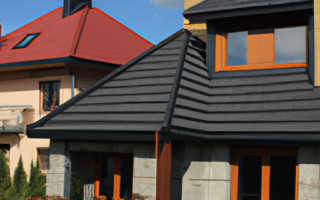The Top Materials for Flat Roofing: A Comprehensive Guide
When it comes to choosing the right materials for flat roofing, there are several options available in the market. Each material has its own advantages and disadvantages, so it is important to carefully consider your specific needs and budget before making a decision. In this comprehensive guide, we will discuss the top materials for flat roofing and their benefits.
1. Built-up Roofing (BUR)
Built-up roofing, also known as BUR, is one of the oldest and most traditional flat roofing materials. It is made up of multiple layers of asphalt and bitumen, alternating with layers of reinforcing fabric. BUR provides excellent protection against UV rays, water, and other environmental factors. It is durable, long-lasting, and can withstand heavy foot traffic. Additionally, BUR has a relatively low installation cost compared to other materials.
2. Ethylene Propylene Diene Monomer (EPDM) Roofing
EPDM roofing is a synthetic rubber material that is widely used for flat roofs. It is highly durable and can last up to 50 years with proper maintenance. EPDM is resistant to UV rays, thermal shock, and weathering. It is also highly flexible, making it suitable for buildings with complex roof designs. EPDM roofs are easy to install and require minimal maintenance, which makes them a cost-effective option in the long run.
3. Thermoplastic Olefin (TPO) Roofing
TPO roofing is a single-ply membrane made from a blend of polymers and ethylene propylene rubber. It offers several benefits for flat roofs, including excellent durability, resistance to UV radiation, and energy efficiency. TPO roofs have heat-welded seams, which provide superior strength and prevent water infiltration. The reflective surface of TPO roofing also helps to reduce cooling costs during hot summers.
4. Modified Bitumen Roofing
Modified bitumen roofing is a type of asphalt-based flat roofing material that has been modified with additional polymers for enhanced durability and flexibility. It provides excellent waterproofing properties and is resistant to UV rays and extreme temperatures. Modified bitumen roofs are relatively easy to install and maintain. They are also highly tear-resistant, making them suitable for high-traffic areas.
5. PVC Roofing
PVC roofing offers exceptional durability and resistance to various weather conditions, chemicals, and UV rays. It has a long lifespan of up to 30 years and requires minimal maintenance. PVC roofs are energy-efficient and have excellent fire resistance. They are also lightweight and easy to install. However, PVC roofing tends to be more expensive compared to other materials.
Choosing the right material for your flat roof is crucial for its longevity and performance. Consider your specific needs, budget, and consult with a professional roofing contractor to determine the best option for your building. Whether you choose BUR, EPDM, TPO, modified bitumen, or PVC, each material has its own benefits and can provide reliable protection for your flat roof for years to come.
Choosing the Right Material for Your Flat Roof: Pros and Cons
When it comes to flat roofing, choosing the right material is crucial for the longevity and performance of your roof. Flat roofs are commonly used in commercial buildings, but they are also becoming popular for residential properties. The top materials for flat roofing include EPDM (ethylene propylene diene monomer), TPO (thermoplastic olefin), PVC (polyvinyl chloride), and modified bitumen.
EPDM, also known as rubber roofing, is a highly durable and long-lasting material. It is resistant to UV rays, ozone, and extreme temperatures, making it suitable for all types of climates. EPDM is easy to install and repair, saving both time and money. Additionally, it has high resistance to punctures and tears, which ensures its reliability over time.
TPO is another popular option for flat roofing. It is a single-ply roofing membrane made of a mix of ethylene propylene rubber and polypropylene. TPO roofs are known for their energy efficiency, as they can reflect heat and UV rays, reducing cooling costs during hot summers. This material is also resistant to mold, algae, and punctures. TPO roofs are typically installed using heat or adhesives, providing a strong and watertight seal.
PVC is a synthetic plastic material that offers excellent durability and resistance to chemicals, punctures, and fire. It has a lifespan of 20-30 years and can withstand extreme weather conditions. PVC roofs are energy-efficient and can help reduce energy costs. They are also low maintenance, with most dirt and debris easily washed away by rain.
Modified bitumen is an asphalt-based material that is reinforced with a fabric or fiberglass for added durability. It is known for its exceptional waterproofing properties, making it ideal for flat roofs. Modified bitumen can expand and contract with changing temperatures without cracking, ensuring its longevity. This material is easy to install and repair, making it cost-effective in the long run.
Each of these flat roofing materials has its pros and cons, and the best choice for your roof will depend on your specific needs, budget, and climate. Consulting with a roofing professional can help you make an informed decision and ensure that the material you choose will provide optimal performance and protection for your flat roof.



